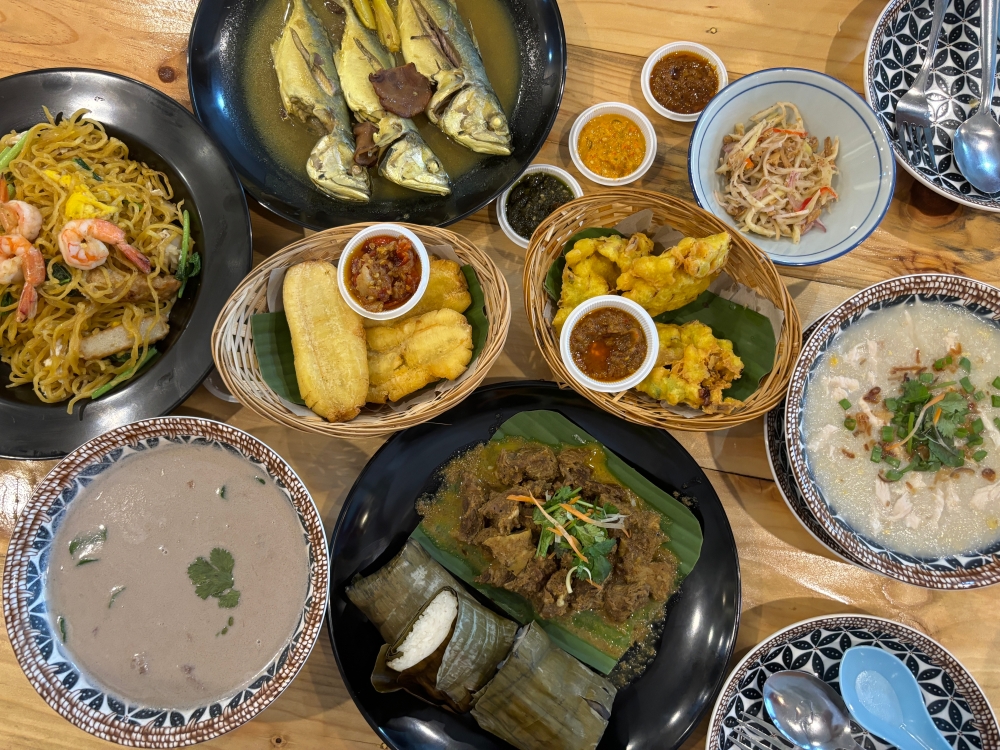- Home
- -
- News
Have you tried linopot or burasak? Sabah native food finds its way into eateries, drawing tourists and eager locals
- admin
- 23 Nov, 2024
KOTA KINABALU, Nov 23 — When most people think of the must-have food in Sabah, the abundant seafood may be what comes to mind.
But to Sabahans, it is their native food that is close to their hearts and it is as diverse as the state’s own rich cultural heritage.
Think linopot with pinasakan, tuhau and bambangan for the Kadazandusuns, putu and latok for the Bajau Laut, burasak with ayam palekko for the Bugis, kuih penjaram for the Bajau Sama, ambuyat for the Brunei Malay among the many.
It is the food from their childhood that they grew up eating on a daily basis in their hometowns, that they crave but can only get from home or during special occasions.
Of late, eateries have popped up around the state capital offering some native delicacies, much to the delight of both locals who are craving a taste of home, but also foodies travelling to Sabah looking to try something different.

Little Sulap, (sulap means hut in Dusun), a cafe tucked into a hidden little corner at the popular Australia lane in the central business district, has been running brisk business serving up plates of their “Original Sabahan” – an individual platter of Kadazandusun favourites.
The plate includes local hill rice, fried ikan basung, local veggies like losun or pucuk ubi, and the essential condiments of bambangan and tuhau.
It is one of the best sellers, as most people who walk in the door are here for something truly local.
“We get a lot of tourists – maybe 70 per cent of our customers are tourists – Chinese, Koreans, and westerners.
“Also, quite a few West Malaysians. I think they hear about us from social media and also the hotels do recommend us,” said Aurel Ham, a staff of the cafe.

“Chinese, Koreans, Singaporeans and West Malaysians seem adventurous in trying out our ethnic food.
“They were looking for something unique to Sabah and many say they found us on social media.
”They take lots of photos and videos themselves and that helps to spread the word,” he added.
He said that the cafe is also popular among young locals who are craving their native food but do not have the time to cook themselves.
It also has the advantage of being in the city centre, walking distance from major hotels and amenities.

For the adventurous
Little Sulap’s other best sellers are the ambuyat, a polarising dish of starchy, glue-like texture with similar condiments as the “Original Sabahan” set.
Unlike the hinava (raw fish cured in lime and chili) and basung (a fried sardine-like fish), the ambuyat is harder to accept than most, due to its gooey texture.
Made from sago plant, the powdered version is combined with water and mixed till it thickens and forms a paste.
“Some of the Koreans said that it was like eating snot and that they struggled to eat it,” Aurel said.
However, in other restaurants, the ambuyat is the star of the show.
“West Malaysians will come here just to try the ambuyat,” said Sandra Paut, owner of The Native Cafe.

The unique starch is flavourless on its own but can be dipped with candas (bamboo chopsticks of sorts) in a variety of dishes.
It is a staple with the Brunei Malay, Bisaya and Lundayeh community along the west coast of Sabah and is also the national dish of Brunei.
Families from west Malaysia often come in with the intention of eating this dish.
They will normally have it with pinasakan, a tamarind and turmeric fish dish and a variety of sambals or sauces.
“It’s become very popular recently. We think it’s because of social media where several Tik Tokers and videos feature this dish,” she said.
West Malaysians are also curious to try butod — protein-rich live sago worms which you eat by biting the body from its hard-shell head.
A quick search on the internet shows hundreds of videos of people trying it for novelty value.

Sandra is one of the few who has believed native food should be at the forefront of Sabahan cuisine, having been the first to operate a buffet-style restaurant specialising in ethnic delicacies almost ten years ago.
Her cafe now, located within a hotel in the suburb of Kepayan, attracts mostly West Malaysian tourists who are looking to try local fare.
“It’s a bit of distance but I think they find that our cafe is a proper and Muslim friendly restaurant,” she said.
Even further from the mainstream is food from the Bugis ethnicity, descendants from Sulawesi, who have brought their love of spice and sambal to desserts like pisang ijo.
Usually found in suburbs, they have their own version of ketupat called burasak or buras for short, and offer putu – pounded and steamed cassava – with ayam palekko – chicken cooked with coconut milk and galangal.

At Mak Enon in Plaza 333, they offer burasak with beef or chicken palekko, coto makassar (beef or chicken and nasi impit in a peanut-based soup) and bakwan jagung (corn fritters) among others.
Here, in the suburbs of Penampang, it’s the locals who are the main customers, eager to try and get to know more of Sabah’s diverse food culture.
“Almost all our customers are locals. They want to try something different, or they’ve heard of it before and never got to try Bugis food before,” said manager Angel Kok.
With more and more restaurants starting to realise the potential of native food, both with tourists and locals, perhaps soon there will be more than a handful of restaurants where you can get a taste of ethnic Sabahan food.
Latest Articles

Barnacle blues: Spain’s Christmas delicacy at risk as climate change and poaching take a toll
Dec 25, 2024

